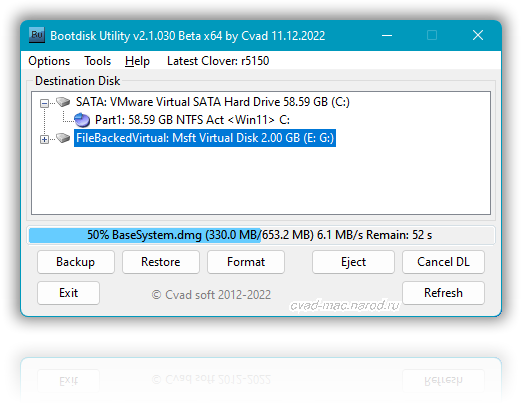

- #LATEST KEXT UTILITY HOW TO#
- #LATEST KEXT UTILITY INSTALL#
- #LATEST KEXT UTILITY PRO#
- #LATEST KEXT UTILITY SOFTWARE#
- #LATEST KEXT UTILITY PASSWORD#
In the bottom right of your window, you should see an “Allow” button next to the message: “System software from developer was blocked from loading.”Ĭlick on the padlock in the bottom left and enter your password, then tap on the “Allow” button. Go to “System Preferences -> Security & Privacy -> General.” Go to “System Preferences -> Extensions” to find extensions installed on your device – both native and third party. How do I access my Big Sur system extensions?
#LATEST KEXT UTILITY HOW TO#
For more information, see System Integrity Protection in Apple Platform Security.įor more information on the security policies, see Startup Disk security policy control for a Mac with Apple silicon in Apple Platform Security.Also read: How to Enable the Root User on Mac Frequently Asked Questions 1. System Integrity Protection (SIP) must be disabled before enabling Permissive Security Mode. Permissive Security: This policy level supports users that are building, signing, and booting their own custom XNU kernels. This is also the policy level required to support booting kernel extensions (kexts) without using a mobile device management (MDM) solution and Automated Device Enrollment with Apple School Manager or Apple Business Manager. Because older versions of macOS inevitably have unpatched vulnerabilities, this security mode is described as Reduced. Reduced Security: This policy level allows the system to run older versions of macOS.
#LATEST KEXT UTILITY INSTALL#
There are three security policies for a Mac with Apple silicon:įull Security: The system behaves like iOS and iPadOS, and allows only booting software that was known to be the latest that was available at install time.
#LATEST KEXT UTILITY PASSWORD#
For more information, see the recoveryOS password section below. Organizations can, however, prevent access to the recoveryOS environment, including the startup options screen, through the use of a recoveryOS password, available in macOS 11.5 or later. For more information on SIP, see System Integrity Protection in Apple Platform Security. Because of this, a Mac with Apple silicon also won’t require (or support) a firmware password-all critical changes are already gated by user authorization. If changing a security setting would significantly degrade security or make the system easier to compromise, users must restart into recoveryOS by holding the power button (so that malware can’t trigger the signal, only a human with physical access can) in order to make the change. On a Mac with Apple silicon, System Security Utility indicates the overall user-configured security state of macOS, such as the booting of a kext or the configuration of System Integrity Protection (SIP). For this reason, an operating system picker has been added to System Security Utility. This means that multiple installed macOS instances with different versions and security policies can exist on the same machine. Unlike security policies on Intel-based Mac computers, security policies on a Mac with Apple silicon are supported for each installed operating system. Startup Disk security policy control for a Mac with Apple silicon

#LATEST KEXT UTILITY PRO#
MacBook Pro Wi-Fi specification details.iPhone, iPad, and iPod touch Wi-Fi specifications.Bundle IDs for native iOS and iPadOS apps.Manage configurations and software updates.Identify an iPhone or iPad using Microsoft Exchange.Integrate Apple devices with Microsoft services.Manage content caching from the command line on Mac.Configure advanced content caching settings on Mac.Review aggregate throughput for Wi-Fi networks.Deploy devices with cellular connections.Deploy devices using Apple School Manager or Apple Business Manager.


 0 kommentar(er)
0 kommentar(er)
